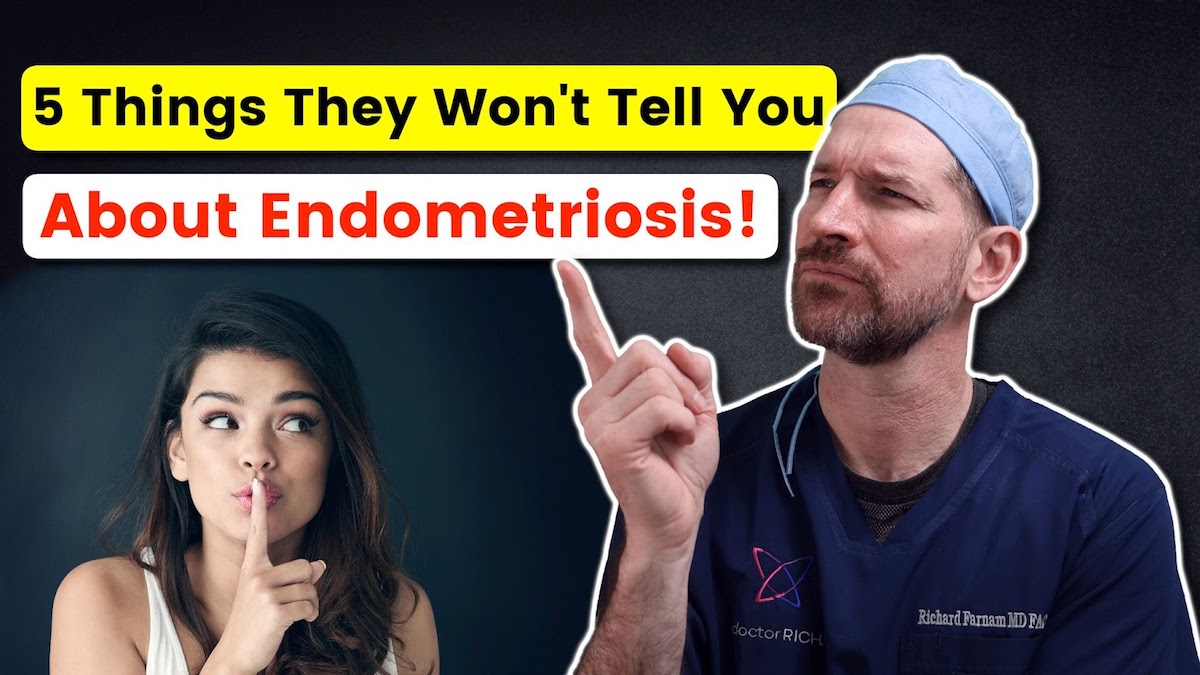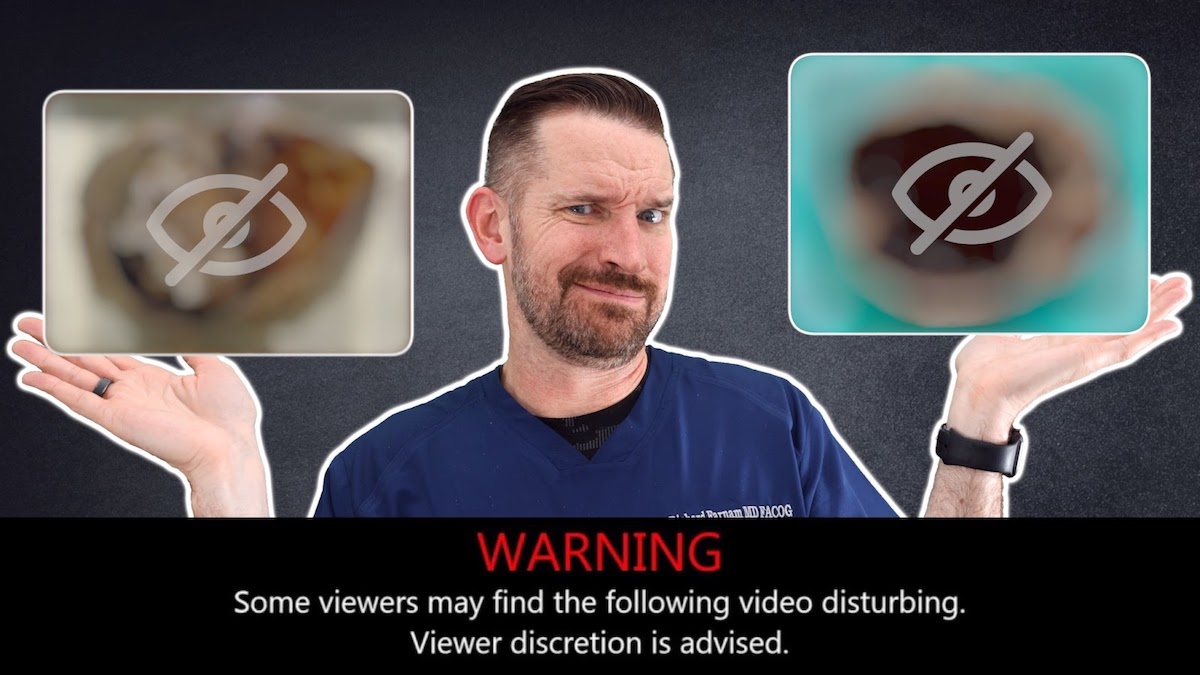Every year, hundreds of thousands of patients visit doctors’ offices for infertility concerns and questions about menstrual irregularities. But let’s face it: Doctors’ offices and doctors’ visits can be crowded and feel rushed, and patients often leave their visit with more questions than answers.
Now, a lot of my patients (who happen to know I’m a YouTuber!) have asked for a menstrual cycle primer so they can be prepared for their visit, be informed, and ask the right questions. So in the next four minutes, we’re going to review the four phases of the menstrual cycle, including menstruation, follicular phase, ovulation, and luteal phase. Let’s get this!
Don’t have time to read this post? Watch the video here instead!
Every month, the human reproductive system (including the pituitary gland and the brain, the ovaries, and the uterus) prepares your body for pregnancy. Every month (when that DOESN’T happen), that thickened, nutrient-rich lining in the uterus that was ready for a pregnancy comes out as your menstrual period.
The menstrual cycle itself involves a complex interaction of hormones between your brain, ovaries, and uterus.
1. Menstrual Phase
This is the first phase of the menstrual cycle, and it begins when the preceding cycle does not result in fertilization and pregnancy. Estrogen and progesterone in the ovary — specifically, the corpus luteum — levels fall off, resulting in muscular contraction, the wall of the uterus, vasospasm of the vessels, which causes all of that nutrient-rich lining and blood to come out as the menstrual period.
The inflammation caused by this process can cause symptoms such as cramping, bloating, back pain, fatigue, mood changes, and breast tenderness. Extreme pain is never normal, and that can be a sign of a disease process (most likely endometriosis or fibroids) and needs to be taken seriously by your physician.
2. Follicular Phase
Phase two is the follicular phase. This phase starts on day one, overlaps menstruation, and continues on until approximately day fourteen through sixteen. In this phase, FSH (or follicle-stimulating hormone) is produced in your pituitary gland in the brain. This hormone causes small, fluid-filled sacs in the ovary to develop called follicles, which contain microscopic little eggs. FSH also causes the granulosa cells in the ovary to produce estrogen. The estrogen stimulates the uterus to grow a thick, nutrient-rich lining in preparation for implantation of a fertilized egg. Of the five to twenty follicles that develop, only the healthiest follicle matures into the dominant follicle, and the rest go away through a process of atresia.
(Nobody knows what the f*#% that means!)
Of the five to twenty follicles that start growing, only the healthiest matures into the dominant follicle — and the rest are reabsorbed. The dominant follicle produces more estrogen, which stimulates the brain and the pituitary to release a second hormone called LH (or luteinizing hormone). This causes the mature follicle to rupture, allowing the egg to leave or ovulate and then work its way down the tube into the uterus.
3. Ovulation
Phase three: ovulation. This typically occurs between day fourteen and sixteen. The process by which the dominant follicle ruptures, ejecting the egg out of the ovary into the tube, is known as ovulation. The LH surge typically precedes ovulation by 48 to 72 hours. So when you go to the drugstore and buy an ovulation prediction kit, this is measuring that LH surge — and the day it comes positive is predicting ovulation in the next two to three days (which is when you need to have sex).
(I mean, you can have sex whenever you want, but that’s when you’re going to get pregnant.)
The egg then travels down the fallopian tube and into the uterus during that journey. If it encounters sperm, fertilization can occur. During this phase, the body temperature actually rises by a little less than one degree, and cervical mucus thickens. This temperature rise is the basis of most fertility tracking systems.
*Bonus content! At birth, all women are born with approximately one to two million follicles, which remain dormant until puberty, at which time there are three to 400,000 left. Then every cycle from age 12 for the next 42 years, there’ll be five to twenty follicles that mature. All but one of them are reabsorbed (plus hundreds of others) every cycle. By the time you arrive at menopause, there are fewer than a thousand eggs remaining.
4. Luteal Phase
Phase four: the luteal phase. This phase runs from approximately day fifteen to day twenty-eight. The phase is named after the corpus luteum cyst. So that dominant follicle turns into a yellow progesterone-secreting cyst called corpus luteum. Corpus luteum (in Latin) means “yellow body.” The progesterone secreted by the corpus luteum cyst thickens and stabilizes the endometrium and supports pregnancy. If the fertilized egg enters the uterus and sticks to the uterine wall, this process is called implantation, and you become pregnant.
The early cells of the placenta called syncytiotrophoblasts produce the last hormone we’re going to talk about: hCG (human chorionic gonadotropin). The hCG is the signal that tells the corpus luteum cyst to keep on producing that progesterone, which supports the pregnancy for up to about twelve weeks. After twelve weeks, the placenta can produce and sustain the pregnancy on its own.
But if pregnancy doesn’t happen, the lack of hCG signaling to the corpus luteum causes the corpus luteum cyst to reabsorb dropping the levels of estrogen and progesterone — causing muscle wall contractions in the uterus vasospasm. And we’re back to phase one: menstruation.
And by the way, hCG is the hormone that is detected in the drugstore pregnancy and commercially available pregnancy tests. And that brings us full circle!
You can circle around and hit that subscribe button, and make sure you leave a comment to let us know what topic we should handle next.




